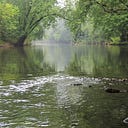Prairie strips focus of upcoming field day
Mower SWCD, partners offer free event Sept. 15; RSVP by Sept. 14
Prairie strips established in small areas of southeast Minnesota crop fields are showing the ability to improve water quality on site by filtering rainwater.
This innovative practice will be featured at a free field day Wednesday, Sept. 15, in eastern Mower County at the Wayne DeWall farm south of Grand Meadow in the headwaters of the Root River’s south branch.
From 9 a.m. to noon, on-site presentations and a panel discussion will be given by officials with Mower Soil & Water Conservation District; Minnesota Department of Agriculture (MDA); Iowa State University; University of Northern Iowa; and the Sand County Foundation.
Participation and a boxed lunch are free but attendees must register by Tuesday, Sept. 14, by emailing Mower SWCD district manager Justin Hanson at: justin@mowerdistrict.org
Prairie strips are a conservation practice that protects soil and water while providing habitat for wildlife and pollinators. A research focus for more than 10 years, prairie strips have shown that integrating small amounts of prairie into strategic locations within corn and soybean fields can yield strong benefits for soil, water and biodiversity.
These small amounts of prairie come in the form of in-field, contour buffer strips and edge-of-field filter strips. Prairie strips provide great benefits to a greater degree than other types of perennial vegetation because they incorporate a diverse array of native plant species with deep, multi-layered root systems and stiff stems that hold up during runoff from a driving rain.
“It’s a very farmer-friendly practice in that prairie strips can be used by the farmer as a turnaround area for machinery and used as headlands,” said James Fett, Mower SWCD’s watershed technician. “Prairie strips really are an innovative, flexible solution that landowners can put anywhere on their farm.”
Ranging from 30 to 120 feet in width, prairie strips are highly effective at reducing the loss of sediments, nutrients and pesticides when stormwater is running off cropland, Fett said.
“A lot of landowners are enrolling prairie strips in areas that are sensitive to erosion,” Fett said. “That’s often the headlands and fence lines of a field and along heavy tree cover where trees compete with corn and soybeans for sunlight, water and nutrients.”
Fett collects stormwater-runoff samples from a monitoring site next to a prairie strip on the DeWall farm as part of the Minnesota Department of Agriculture’s Root River Field to Stream Partnership program led by MDA hydrologist Kevin Kuehner.
This partnership is a multi-organizational effort to evaluate agricultural practices and water quality at multiple scales and landscape settings. The strategic selection of these study watersheds allows the findings to be applied to similar areas across southeastern Minnesota.
DeWall’s prairie strip was implemented as part of the Field to Stream Partnership project, with partners closely monitoring and measuring each stormwater runoff event at the site. Prior to the prairie strip, the partnership gathered six years of data at the site.
Early results show immediate water-quality improvements due to the prairie strip at the DeWall farm.
At Wednesday’s field event, organizers will discuss research at the DeWall farm on “edge-of-field” stormwater runoff and the rate and timing of applying nitrogen to cropland. Pesticide-monitoring results also will be shared.
Prior to lunch, a panel discussion on prairie strips under a tent at the DeWall field will feature Fett along with Tim Youngquist of the Iowa State University’s STRIPS program; Justin Meissen, Tallgrass Prairie Center at the University of Northern Iowa; Ron Meiners, Root River watershed farmer outreach coordinator; and Greg Olson of the Sand County Foundation
If there’s poor weather, a virtual meeting will be announced to the event’s registrants.
